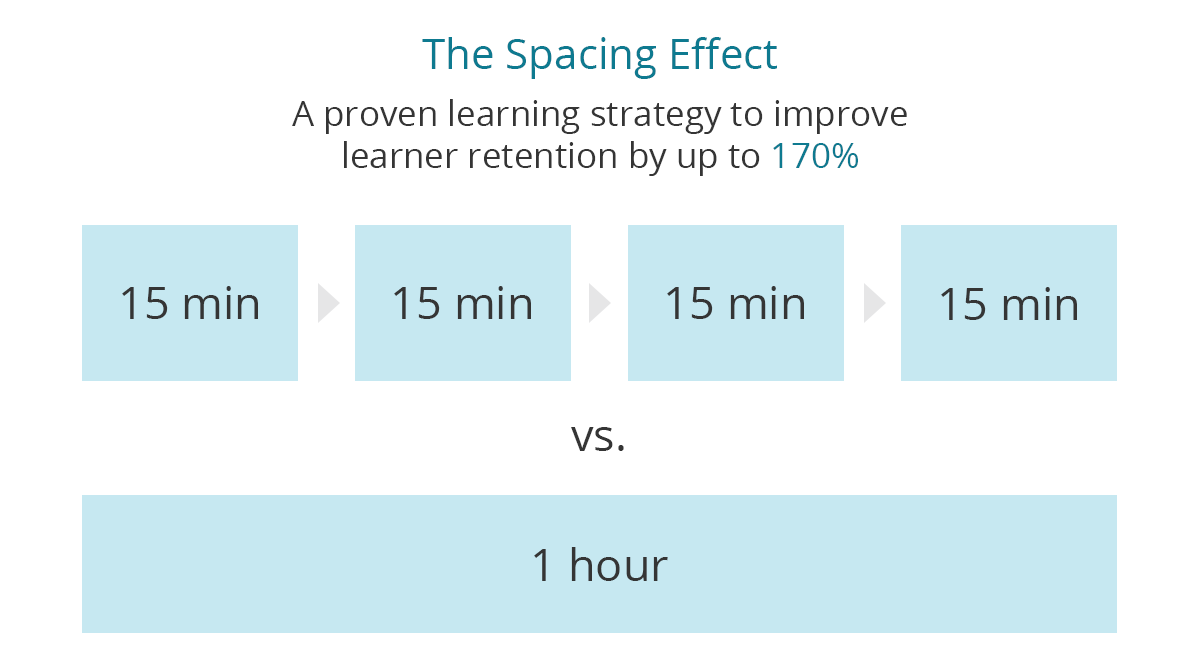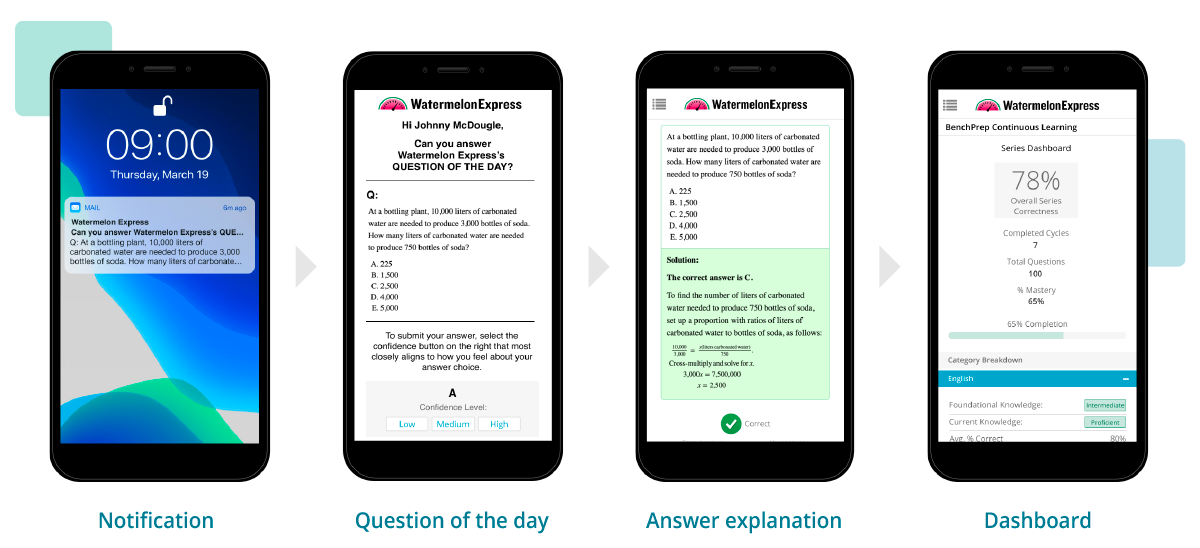How Spaced Repetition Helps Learners Achieve Mastery In Your Learning Program
We’ve all been there before…
You meet someone at a bar, or maybe it’s a networking event. You each say hi, introduce yourselves and exchange a pleasantry, and then literally 2 minutes later, you have NO idea what that person’s name is.
Why can’t our brains store that information in a “Notes” or “Reminders” section for us to leverage instantaneously at any time?
Unfortunately, our brains will never function quite like a smartphone. To properly file information away in our long-term memory, whether it’s simple and less complex information like a name, or more substantive knowledge like administering a medical procedure, our brains require more than a 1-time information download for long-term recall.
We’ve already seen why it’s so important to leverage microlearning to combat the forgetting curve, but what microlearning techniques are best equipped to defeat that ever-present beast? If you want your learners to achieve mastery, the solution is spaced repetition.
What is spaced repetition and why does it matter for your learning program?

Education and training programs almost always aspire for learners to not just obtain, but also retain knowledge. The latter part is where spaced repetition comes into play. Spaced repetition is what makes flashcards so powerful. Flashcards are why many of us still know the definition of “promulgate” (to put into law or formally declare) or things like “Mitochondria” (the powerhouse of the cell).
Spaced repetition shows that by repeating and continuously exposing ourselves to content over time, we are significantly more likely to retain that knowledge and commit it to long term memory.
Combat the forgetting curve by delivering content in spaced intervals of time

This chart shows a traditional learning pathway in a transactional, point-in-time learning program. We can see the regression and deterioration of recall without reinforcement thanks to the forgetting curve. We can also see what can be achieved through the use of spaced repetition. By reintroducing learning content in small intervals over time, you not only slow down the forgetting curve but also significantly increase the chances of knowledge being committed to long term memory.
A common best practice for applying spaced repetition is to show learners newly introduced and more difficult concepts more often, with less difficult and older concepts being seen less often.The more we drill newly attained knowledge into our memory, the less frequently we require reminders to affirm we still have an accurate recollection of that information.
Babbel, a language learning app, is a great example of how to effectively send information from short-term to long-term memory. Babbel relies heavily on spaced repetition to help with vocabulary memorization. Babbel reintroduces words through six memory stages, using spaced repetition to reintroduce a word or phrase at an ideal point along the forgetting curve to maximize time spent and retention.
The BenchPrep Approach
At BenchPrep, spaced repetition is ingrained in our approach to learning program delivery. Our configurable, cloud-based learning platform makes use of research-backed practices of spaced repetition through data-driven algorithms that are designed to deliver maximum learner engagement.
One of the ways BenchPrep incorporates spaced repetition is by pushing learners daily questions on mobile devices with instantaneous feedback.

We also engage learners through digital flashcards, which help with active recall for complex knowledge frameworks covering various interconnected concepts. The ordering of cards, frequency of study, and strategies for dealing with incorrect cards all combine to significantly impact knowledge retention and help with achieving learning mastery. By integrating this approach, your learning programs will be set up to continuously engage learners, which can lead directly to more sustainable revenue.
To learn more about how spaced repetition diminishes the forgetting curve and can help drive new revenue streams, download our newest e-book, Dreaming of Recurring Revenue? Engage Learners Continuously.






